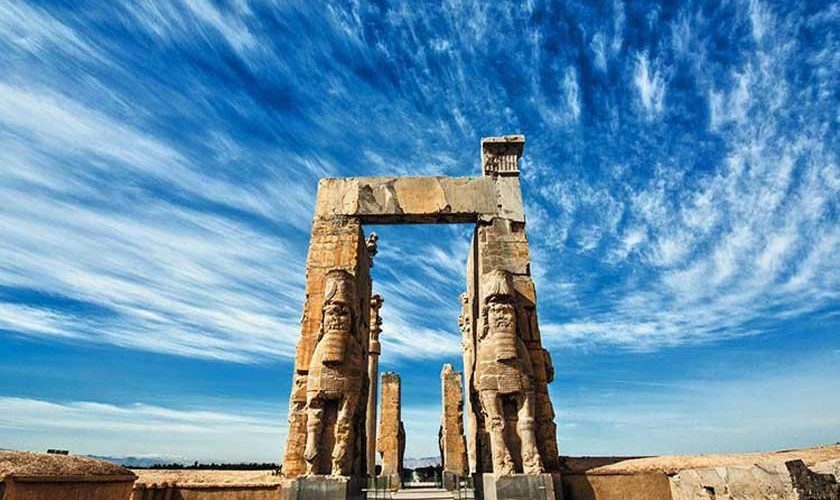Persepolis, also known as Takht-e Jamshid (which is also referred to by names such as Chehel Minar, Sad Soton, Hazar Soton, and Persepolis), is one of the most significant ancient relics of the Achaemenid dynasty, located in the north of Marvdasht County, north of Fars Province. It was declared the capital of the Achaemenid Empire by the order of Darius the Great 518 years before Christ.
Persepolis, a structure initially built by the decree of Darius, was expanded by his son Xerxes and his grandson Artaxerxes I. It was registered as a UNESCO World Heritage Site in 1979. This site contains several Sassanid inscriptions and has also been respected by Muslims as a symbol of Iran’s resistance to foreign invasion.
The construction of Persepolis is one of the greatest, most magnificent, and beautiful historical structures in the world. Darius, aiming to build an unparalleled capital in his country, chose the vast plain of Marvdasht in the heart of Pars and constructed the Persepolis complex on the Rahmat mountain range. Persepolis was neither a city nor a fortress but a magnificent venue for grand ceremonies where the king of Iran welcomed the leaders of his country and representatives from 28 subject nations. The original design of the Persepolis complex was conceived during the reign of Darius the Great. From the beginning, the number and location of palaces, mansions, and their specific uses were determined. To erect this structure, three major construction materials were used (wood, raw and baked bricks, and local limestone). The woods procured locally were not compatible with the tastes and preferences of the designers and architects, necessitating the transportation of suitable woods for the palaces of Persepolis from distant lands. For instance, the underlying beams were made of cedar wood, which at that time only grew in Lebanon.



